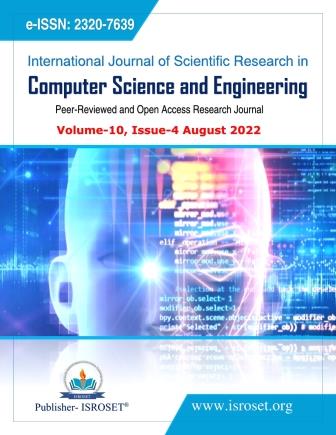The Effect of Maritime Logistics Service Capacity on Clearing and Forwarding Firms at Lagos Seaport
Keywords:
Maritime, Capabilities, Clearing, Throughput, Forwarding, Logistics, SeaportAbstract
The research examines the effect of maritime logistics service (MLS) capacity on clearing and forwarding firms in the Lagos seaport. Both primary and secondary data were used for the work. A total of 310 questionnaires were administered via a simple random sampling technique to the MLS providers and freight forwarders. Whereas secondary data on cargo throughput and ship traffic were gathered from the Nigerian Port Authority (NPA). The tools for data analysis comprise trend analysis, Spear-man correlation and multiple regression statistics. The findings discovered that the linear trend line of the cargo and ship traffic at the seaport has consistently increased with 0.749 R-squared (R2) and 0.839 adjusted (R2) over a 27-year period. The result similarly proved that a significant relationship exits between MLS capacity and firms’ service quality (r = - 0.707, n = 300, p < 0.001). The coefficient of 0.654 implies a change of 10% in service quality which means a change of 6.54% in maritime logistics capacity, hence a statistically significant effect (T-statistic = 17.235, p = 0.000).
References
Z. Zhang & M. A. Figliozzi, “A Survey of China’s Logistics Industry and the Impacts of Transport Delays on Importers and Exporters”, Transport Reviews, Vol.30, Issue.2, pp.179-194, 2010.
B. C. Ndikom, “The Fundamentals of Freight Forwarding Management and Practice in Nigeria”. University of Ibadan Press, Ibadan, 2011.
M. Stopford, “Maritime Economics”, Second Edition, London: Routledge, 1997.
G. D. Kang, S. H. Ahn & M. K. Chai, “Development of the Scale to Measure the Logistics Service Quality”, The Korean Journal of Quality Management, Vol.36, Issue.2, pp.55-58, 2009.
A. Erik “Logistics Capabilities for Sustainable Competitive Advantage”, International Journal of Logistics Management, Vol.10, Issue.2, pp.41-53, 2011.
N. Miremadi, “Customer Satisfaction in Port Industry: A case study of Iranian Shipping”, Strategic Management Journal, Vol.20, Issue.7, pp.637-653 ,2011.
B. C Ndikom “The Impact of Advanced Technologies and Telecommunications: Implications for Development of Nigerian Ports Industry, International Journal of Research in Commerce, Economics and Management, Vol.5, No.1. January, 2015.
P. L. Yeoh & K. Roth, “An Empirical Analysis of Sustained Advantage in the US Pharmaceutical Industry: Impact of Firm Resources and Capabilities”. Strategic Management Journal, Vol.20, Issue.7, pp.637-653, 2015.
D. Seok, “Empirical Study of Logistics Service Quality Factors Influencing Service Satisfaction on Supplying the Industrial Goods in the Tourism and Leisure Industry”, Journal of Business Logistics, Vol.18, Issue.2,, pp.31-41, 2016.
E.Cladea,“Capabilities and Performance of Logistics Service Providers”, The International Journal of Logistics Management, Vol.4, Issue.2, pp.61-74, 2016.
K. Z. Sohn, “Assessment of Logistics Service Quality Using the Kano Model in a Logistics-Triadic Relationship”, Transportation Research Part E: Logistics and Transportation Review, Vol.41, Issue.3, pp.217-234, 2017.
T. Yorulmaz, “Maritime Transport Logistics Service Capabilities Impact on Customer Service and Financial Performance”, International Journal of Business and Social Research, Vol.2, Issue.4, pp.309-321, 2017.
A. A. Zuraimi, Y. M. Rafi, I. M. Dahlan, M. N. Fadiah, “A Study of Logistics Development in the Malaysia Eastern Region: A descriptive analysis”, International Journal of Business and Social Research, Vol.2, Issue.4, pp.309-321, 2017.
Downloads
Published
How to Cite
Issue
Section
License

This work is licensed under a Creative Commons Attribution 4.0 International License.
Authors contributing to this journal agree to publish their articles under the Creative Commons Attribution 4.0 International License, allowing third parties to share their work (copy, distribute, transmit) and to adapt it, under the condition that the authors are given credit and that in the event of reuse or distribution, the terms of this license are made clear.







